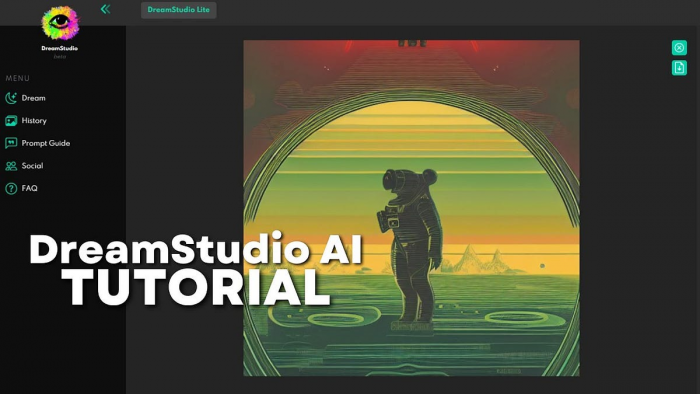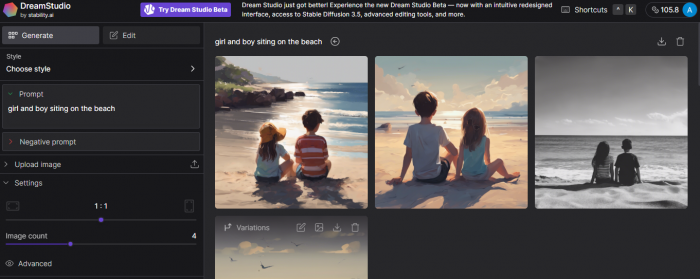DreamStudio is an image generation platform built by Stability AI. It allows users to create images by entering descriptive prompts, using underlying models from the Stable Diffusion series. The tool is designed for those who want control over visuals without relying on stock content or traditional editing software.

You begin by entering a text prompt in the Create tab — for example, “pizza with melted cheese, olives, and tomato sauce.” Based on this input, DreamStudio processes and generates images. Users can choose how many images they want at a time, adjust the image ratio, and apply advanced settings like style presets.
Once the image is generated, editing options appear. These include resizing, upscaling, recoloring, erasing parts, and generating alternate versions of the same prompt. Every feature runs on a credit system, which determines how many resources are used per operation.
Editing tools are available after generation. You can hover over any image to open a menu where options like the following are accessible:
Each function uses a specific number of credits, and the platform keeps usage transparent through its settings panel.
DreamStudio operates on a usage-based credit model. Different actions cost varying credits depending on the model used and the complexity of the task. Here’s a snapshot:
| Action Type | Credits Used |
| Stable Image Ultra | 8 |
| Stable Diffusion 3.5 Large | 6.5 |
| Edit: Upscale (Fast) | 1 |
| Edit: Resize | 4 |
| Recolor | 5 |
| Remove Background | 2 |
Credits are consumed each time an image or edit is processed. When subscription credits run out, users can either wait for renewal or purchase Premium credits, which don’t expire. Subscription credits, by contrast, expire after 30 days.

DreamStudio is built for generating creative imagery, not for representing real-world or historical accuracy. The system is trained to recognize patterns and visual elements but isn’t designed to replicate specific events, people, or timelines. It also currently supports only US English prompts, which limits multilingual use.
If users accidentally delete content or face generation errors, the support portal offers help. However, like many automated systems, it may occasionally flag prompts through its content moderation engine, even if unintended.

What Works Well
What Needs Consideration
DreamStudio offers a structured and moderately flexible environment for generating AI-based images. It’s suitable for users looking for creative visuals, prototype content, or design inspiration, provided they are comfortable working within a credit system and with limited language support.
The platform does what it’s designed to do — create and edit AI-generated images — but users looking for detailed realism, multilingual input, or lower-cost usage should weigh the trade-offs before relying on it for core tasks.
Be the first to post comment!